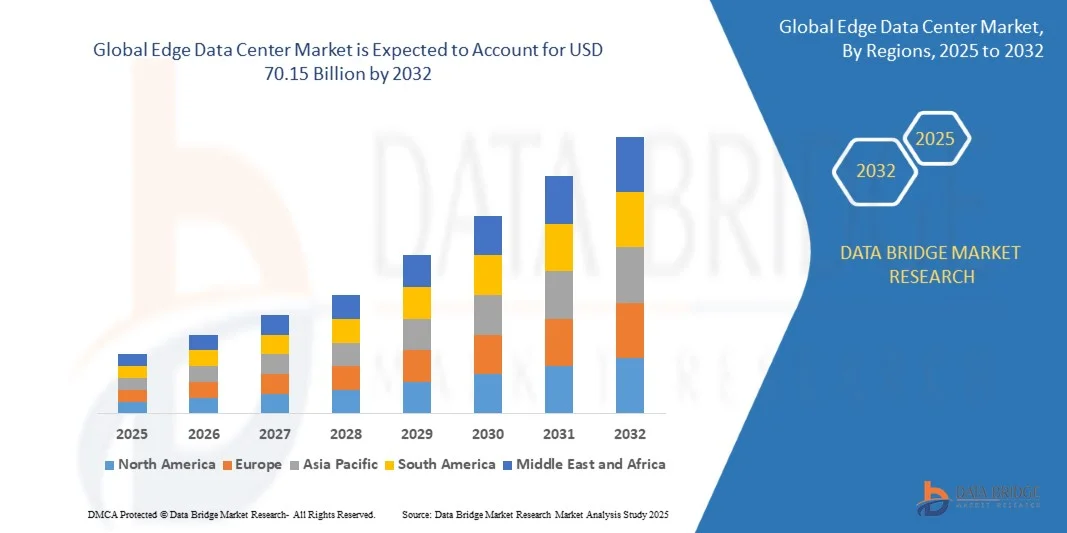Why Edge Data Centers are the Future of Digital Infrastructure

Introduction
In today’s hyperconnected world, where digital services power everything from remote work to autonomous vehicles, the demand for faster, more reliable, and highly distributed computing is higher than ever. Traditional, centralized data centers have long been the backbone of digital infrastructure, but as data volumes explode and latency-sensitive applications grow, this model is reaching its limits. Enter edge data centers – a transformative evolution in how we process, store, and deliver data.
Definition
An Edge Data Center is a small, localized facility that provides computing, storage, and networking resources closer to end users and devices, rather than relying solely on large, centralized data centers. Its main purpose is to reduce latency, improve performance, and support real-time data processing by bringing cloud-like capabilities nearer to the “edge” of the network, often in support of applications such as IoT, autonomous systems, and content delivery.
What Are Edge Data Centers?
An edge data center is a small, localized facility that provides cloud computing and data storage at the “edge” of the network – closer to where data is generated and consumed. Unlike large centralized hyperscale data centers that may be hundreds of miles away, edge facilities are designed to process and serve data locally, reducing the time it takes for information to travel.
These data centers are not intended to replace traditional hyperscale facilities but to complement them. While large data centers will continue to handle massive storage, analytics, and global services, edge data centers will provide the agility and responsiveness needed for next-generation applications.
Why Centralized Data Centers Alone Are No Longer Enough
Centralized data centers have been incredibly effective for the past two decades, enabling global cloud computing and digital transformation. However, their limitations are becoming apparent:
Latency Issues:
Many emerging applications – such as autonomous vehicles, augmented reality (AR), remote robotic surgery, and real-time gaming – require response times measured in milliseconds. Even a 50-millisecond delay caused by distance to a centralized data center can compromise user experience or, in some cases, safety.
Data Explosion at the Edge:
The growth of IoT devices, smart sensors, and connected machines has created a tidal wave of data generated at the network edge. According to industry forecasts, more than 75 billion IoT devices will be in use by 2030. Transmitting all that raw data back to centralized facilities is inefficient and costly.
Bandwidth and Network Strain:
Video streaming, cloud applications, and edge devices place enormous stress on network infrastructure. Routing all traffic to central data centers leads to congestion, higher costs, and slower performance.
Reliability and Resilience:
In critical industries such as healthcare, finance, and manufacturing, downtime is unacceptable. Centralized architectures create single points of failure, while edge deployments distribute computing power more widely, reducing risk.
The Advantages of Edge Data Centers
Edge data centers address these challenges by bringing computation closer to where it’s needed. Their benefits are numerous:
1. Ultra-Low Latency
By reducing the physical distance between users and servers, edge facilities minimize latency. This is vital for applications like real-time analytics, smart traffic systems, or immersive virtual reality experiences.
2. Reduced Bandwidth Costs
Processing data locally allows organizations to filter, analyze, and store only essential information in centralized facilities. This reduces bandwidth consumption and lowers network transport costs.
3. Enhanced Reliability
Distributing workloads across multiple edge locations provides redundancy and ensures services remain available even if a central facility or network link goes down.
4. Scalability and Flexibility
Edge deployments can be added incrementally as demand grows in specific geographic regions. This modular approach makes it easier to scale digital infrastructure where and when it’s needed.
5. Improved User Experience
From streaming high-definition video with zero buffering to powering interactive online learning, edge data centers deliver smoother, more reliable experiences for end users.
Key Drivers Behind the Rise of Edge Data Centers
Several megatrends are accelerating the adoption of edge infrastructure:
- 5G Networks: The rollout of 5G enables high-speed, low-latency connectivity, but to fully leverage it, computing must also move closer to users. Edge facilities complement 5G by delivering real-time processing.
- IoT Expansion: Billions of sensors in factories, cities, and homes generate vast amounts of data. Edge computing enables immediate local analysis without overwhelming centralized clouds.
- Artificial Intelligence (AI) and Machine Learning: AI models require massive data inputs and fast feedback loops. Running inference at the edge reduces delays and improves responsiveness.
- Content Delivery Growth: Streaming platforms, gaming companies, and e-commerce businesses are increasingly using edge data centers to provide faster, region-specific content delivery.
- Industry-Specific Demands: Sectors such as healthcare (remote monitoring), transportation (autonomous vehicles), and manufacturing (smart factories) all require edge-enabled solutions.
Real-World Applications of Edge Data Centers
Edge data centers are not just theoretical – they’re already transforming industries.
- Healthcare: Localized data processing allows wearable devices and remote monitoring systems to provide doctors with real-time health updates. This is crucial for telemedicine and emergency response.
- Manufacturing: Smart factories rely on edge computing to monitor machines, detect anomalies, and optimize production lines without waiting for data to travel to distant facilities.
- Retail: Edge-enabled analytics help retailers understand customer behavior in real time, enabling personalized promotions and efficient inventory management.
- Transportation: Autonomous vehicles require instant decision-making. Edge facilities along highways and urban areas support the split-second processing needed for safe navigation.
- Smart Cities: From traffic management to energy distribution, municipalities are leveraging edge data centers to build more efficient, sustainable urban environments.
Challenges in Deploying Edge Data Centers
While the benefits are compelling, building and maintaining edge infrastructure is not without obstacles:
- Capital Costs: Rolling out distributed facilities requires significant investment in equipment, real estate, and connectivity.
- Standardization: The edge ecosystem is still maturing, with varying approaches to hardware, software, and management practices.
- Security Concerns: More distributed nodes mean more potential attack surfaces. Robust cybersecurity measures are essential.
- Operational Complexity: Managing thousands of small facilities across wide geographies demands advanced monitoring, automation, and orchestration tools.
Despite these challenges, industry momentum suggests that edge deployments will only accelerate as technology evolves and costs decline.
Future Trends of Edge Data Center Market
Growth Driven by 5G:
The rollout of 5G networks will accelerate edge data center adoption, as ultra-fast, low-latency connections demand localized processing power.
AI and Automation Integration:
Edge facilities will increasingly leverage AI and automation for real-time analytics, predictive maintenance, and autonomous operations, reducing human intervention.
Edge-as-a-Service Models:
More enterprises will adopt subscription-based edge infrastructure, allowing them to scale quickly without heavy upfront investment.
Sustainability Focus:
Operators will prioritize green energy and energy-efficient designs, aligning edge growth with global sustainability goals.
Industry-Specific Solutions:
Verticals like healthcare, retail, and manufacturing will see specialized edge deployments tailored to their unique operational needs.
Growth Rate of Edge Data Center Market
According to Data Bridge Market Research, the size of the global edge data center market was estimated at USD 12.93 billion in 2024 and is projected to grow at a compound annual growth rate (CAGR) of 23.54% to reach USD 70.15 billion by 2032.
Learn More: https://www.databridgemarketresearch.com/reports/global-edge-data-center-market
Conclusion
Edge data centers represent a fundamental shift in digital infrastructure. By processing data closer to where it’s generated and consumed, they unlock ultra-low latency, reduce bandwidth strain, enhance reliability, and power next-generation applications. While challenges remain, the momentum is undeniable: the edge is becoming the new frontier of computing.




